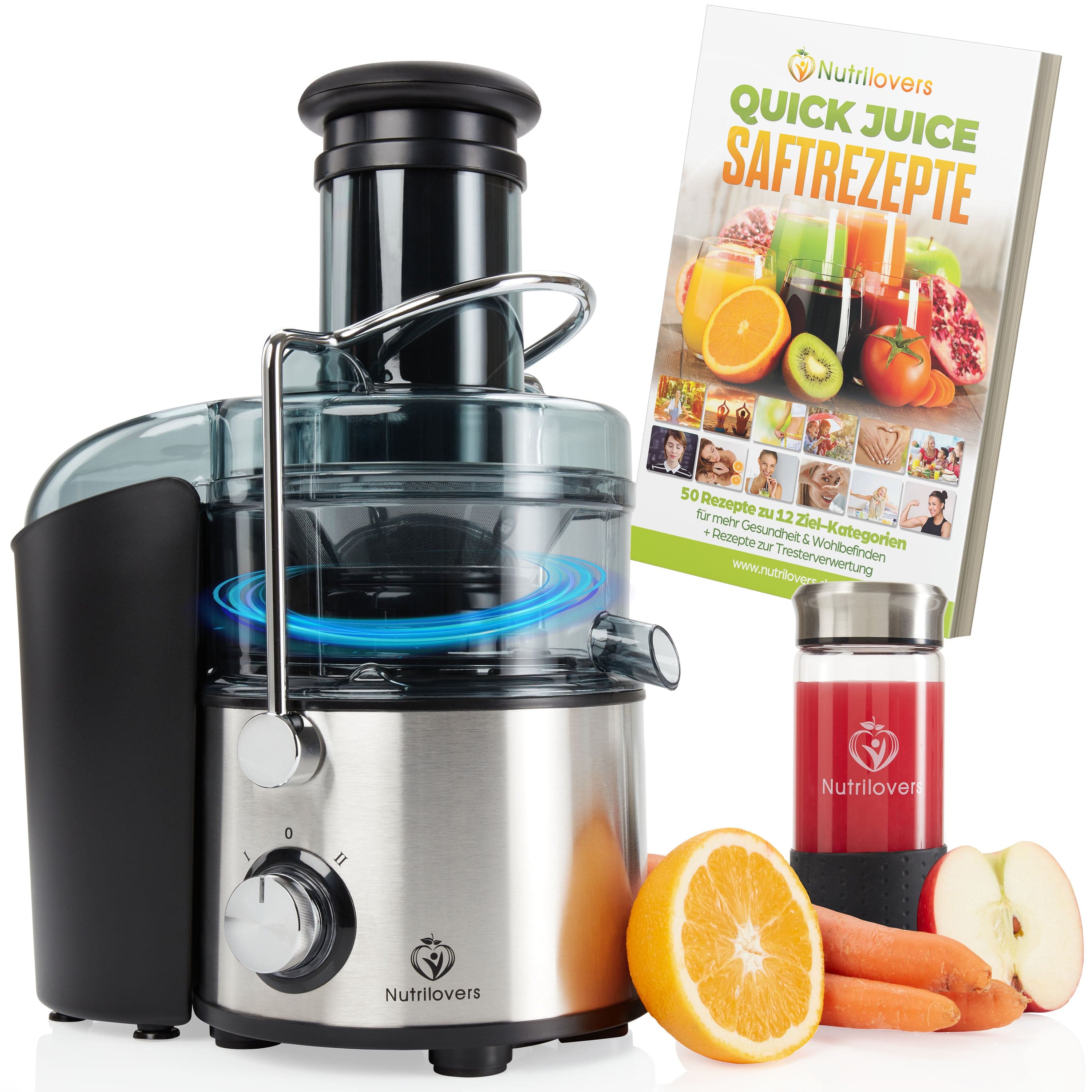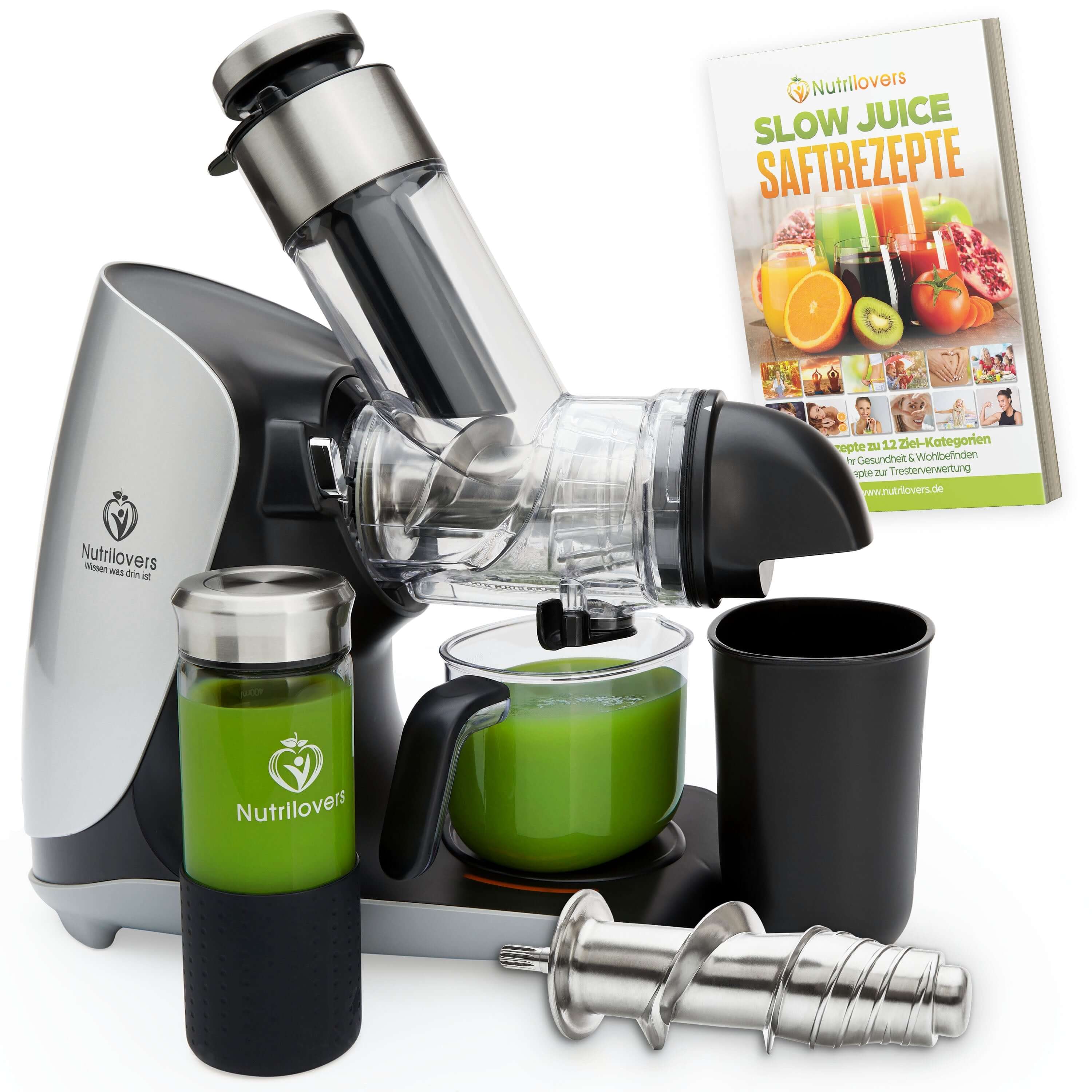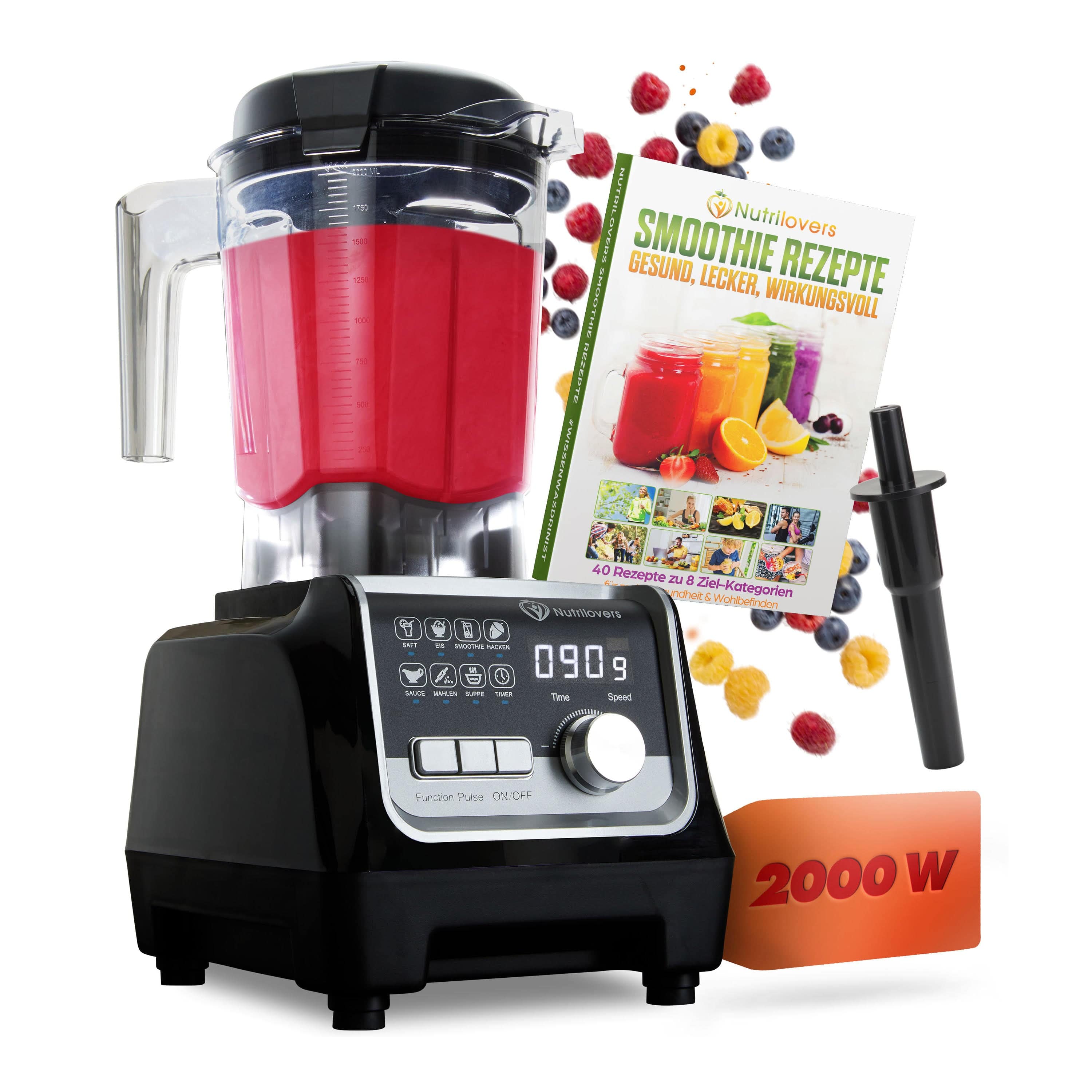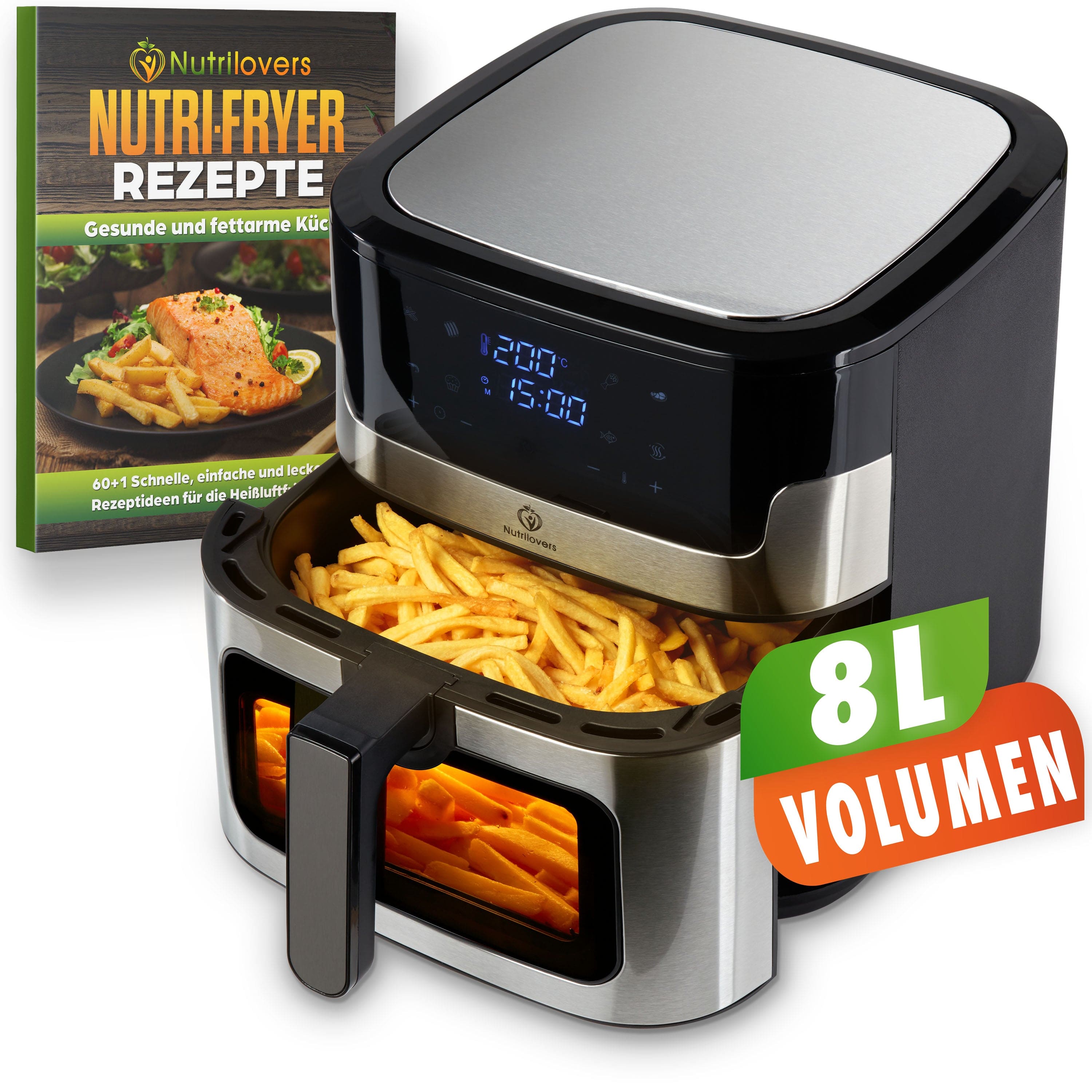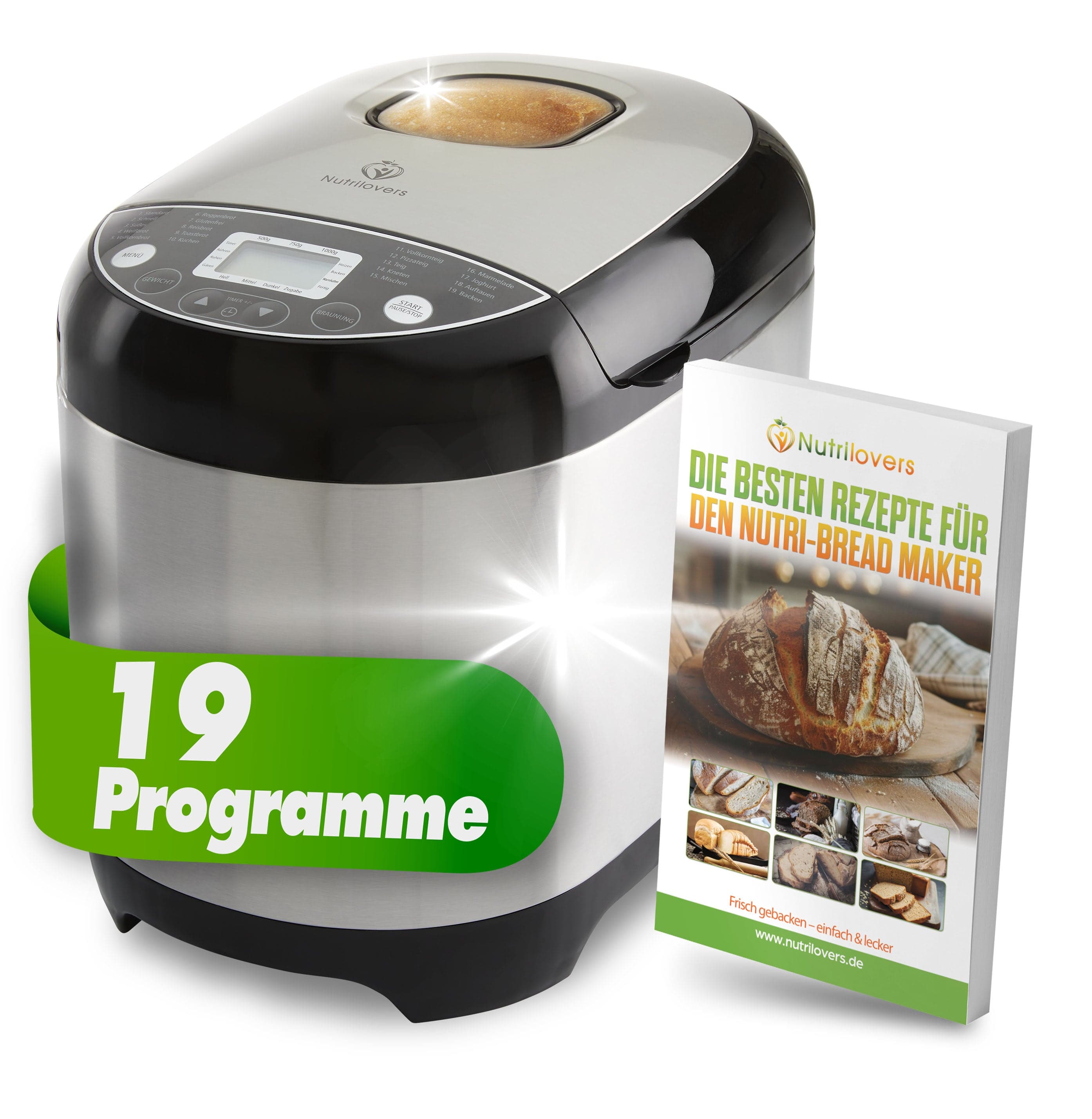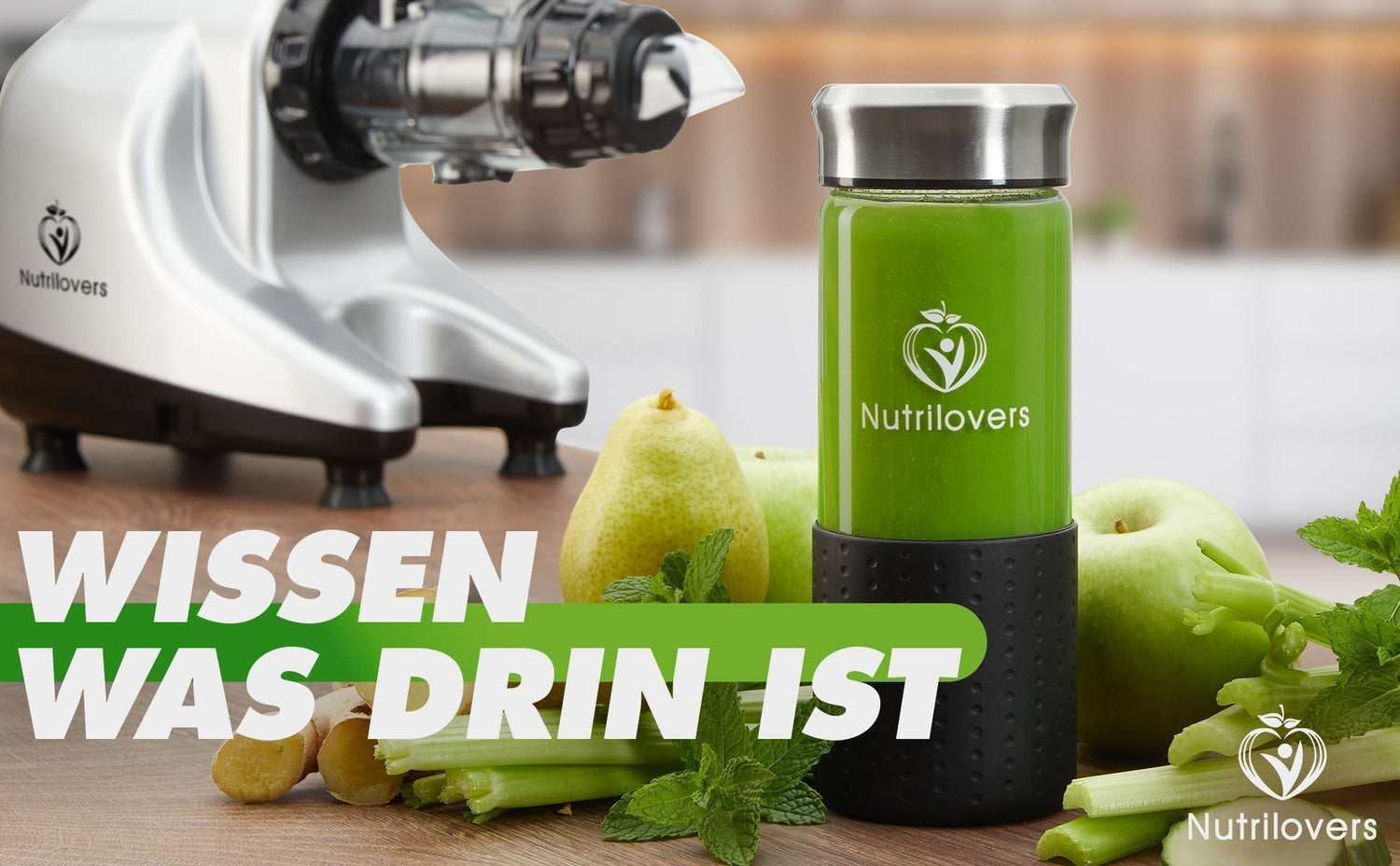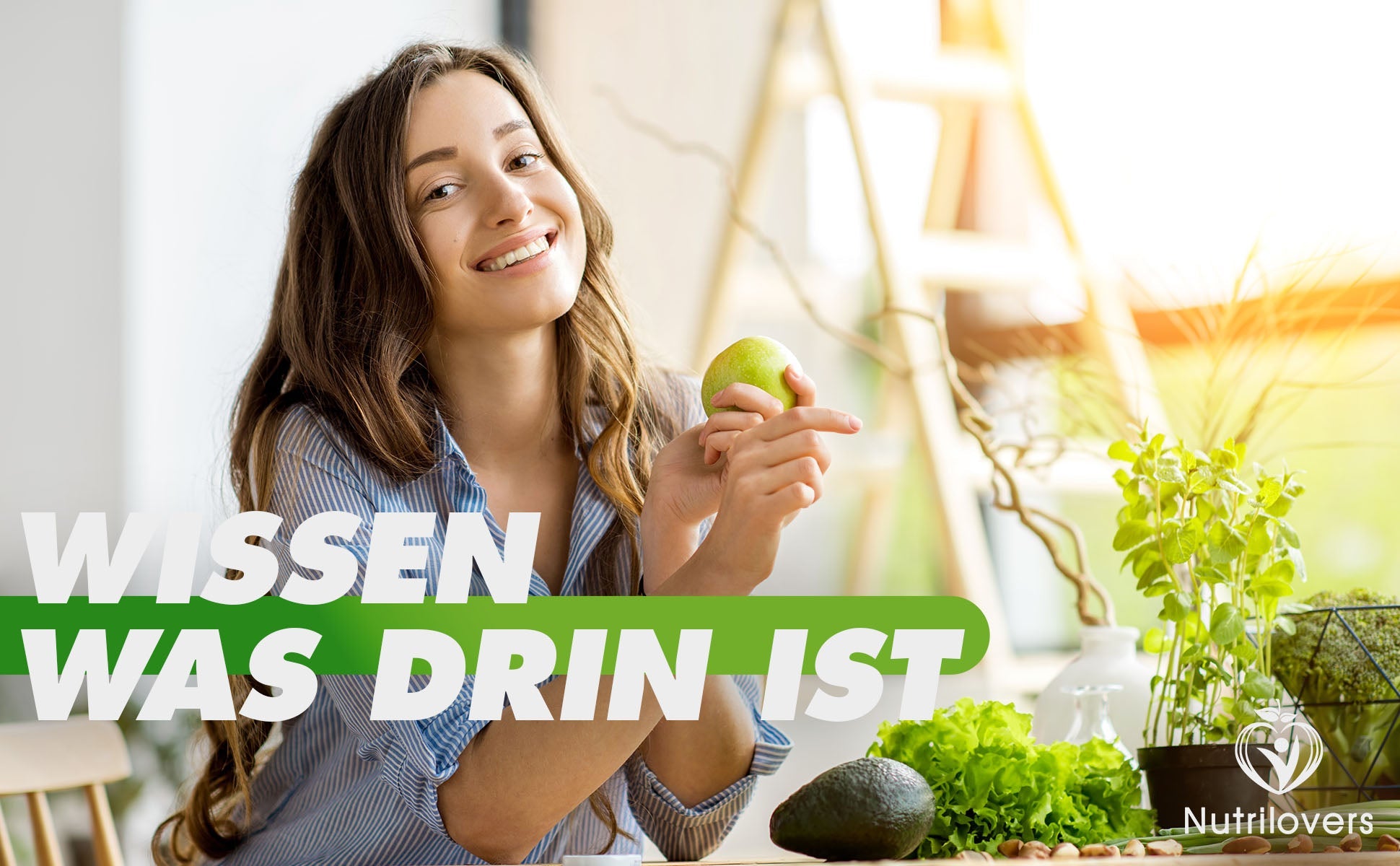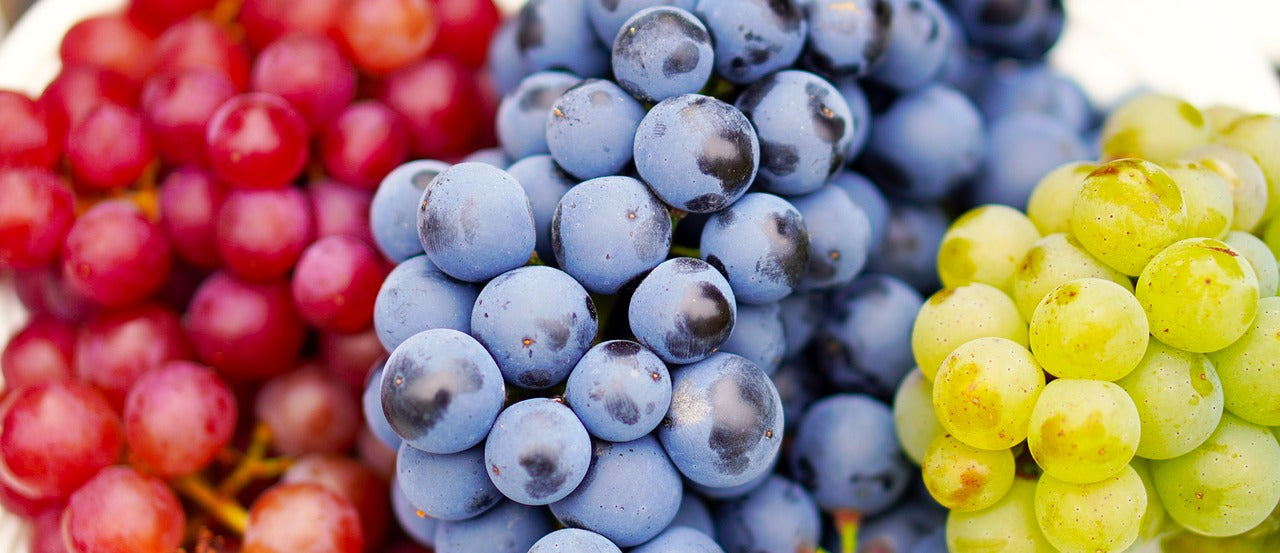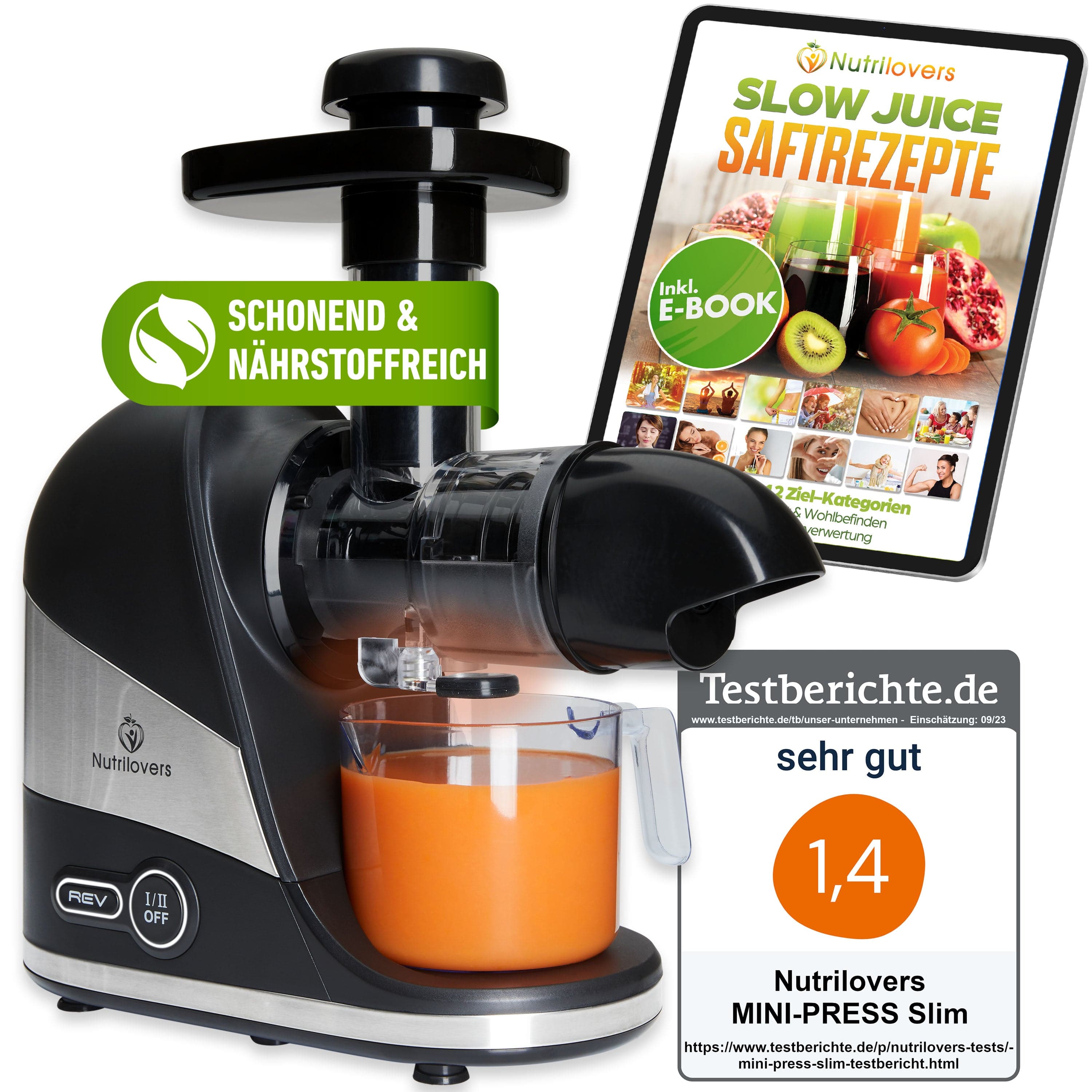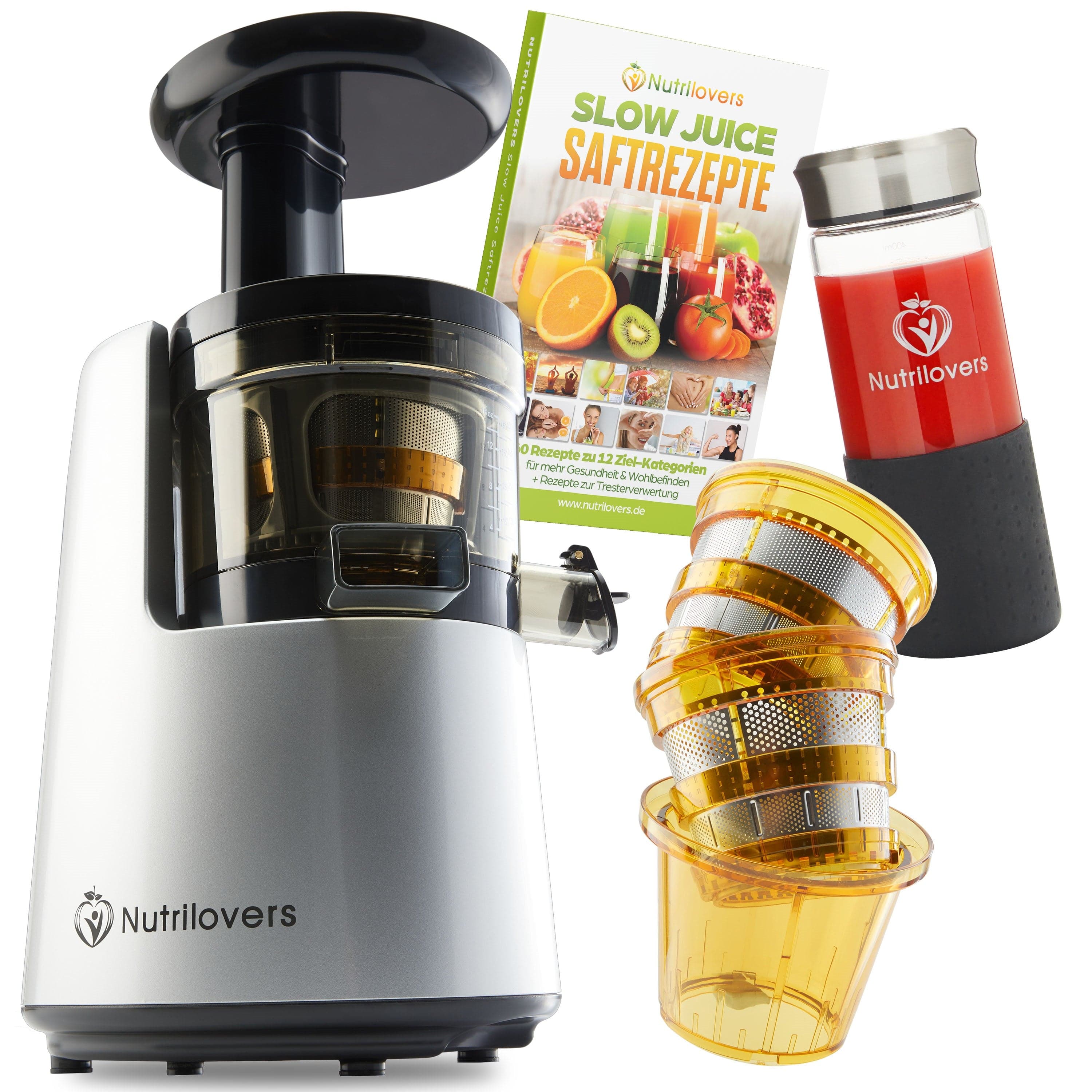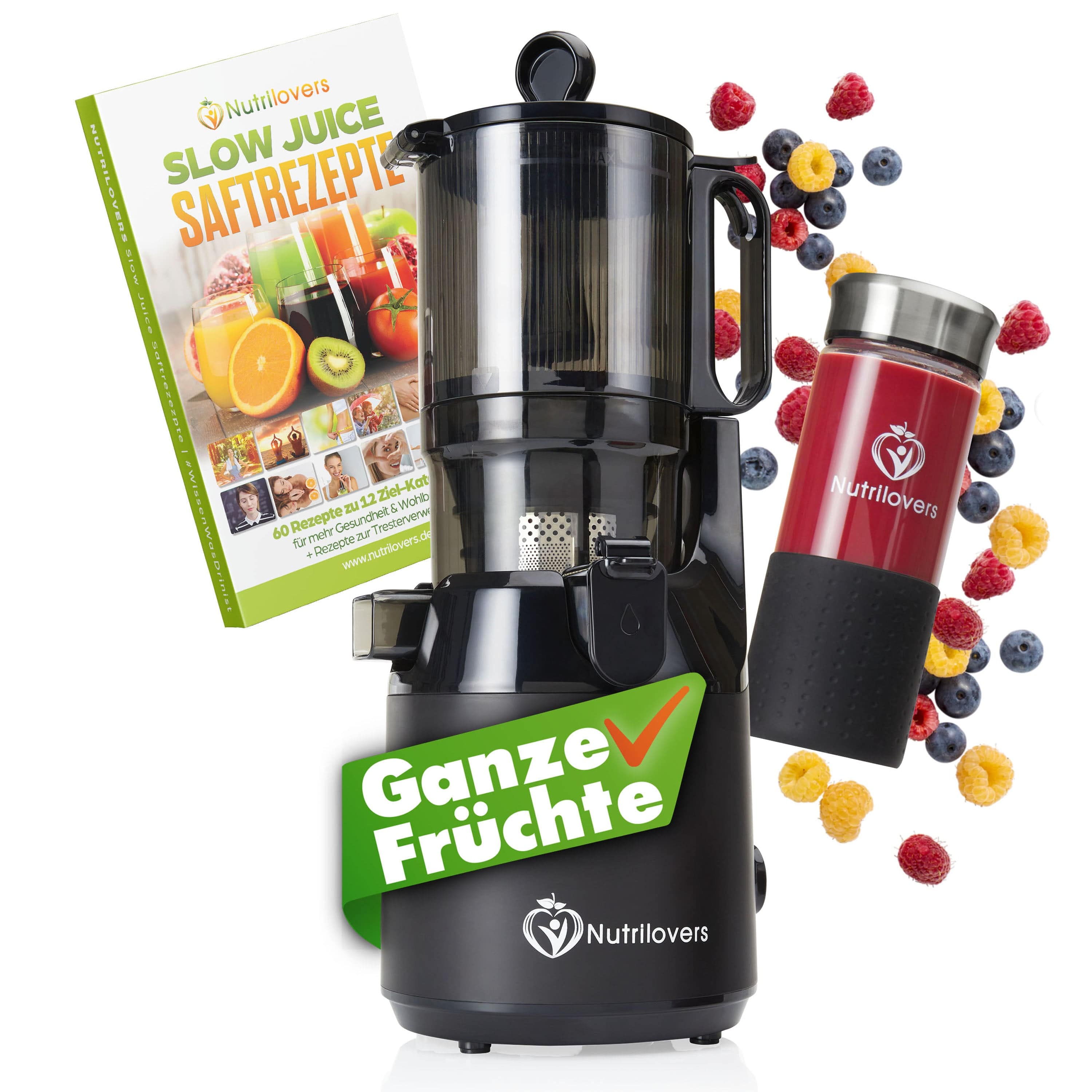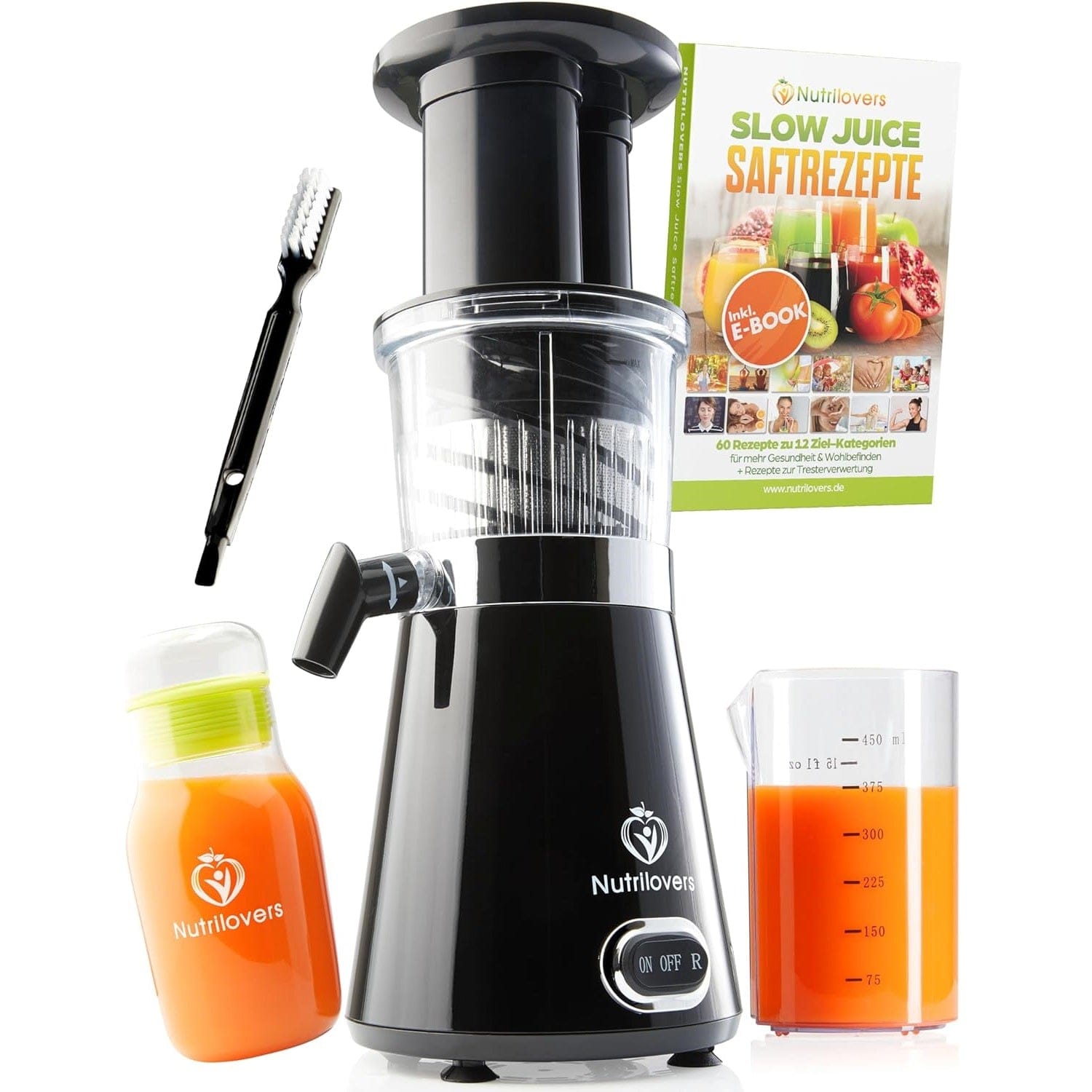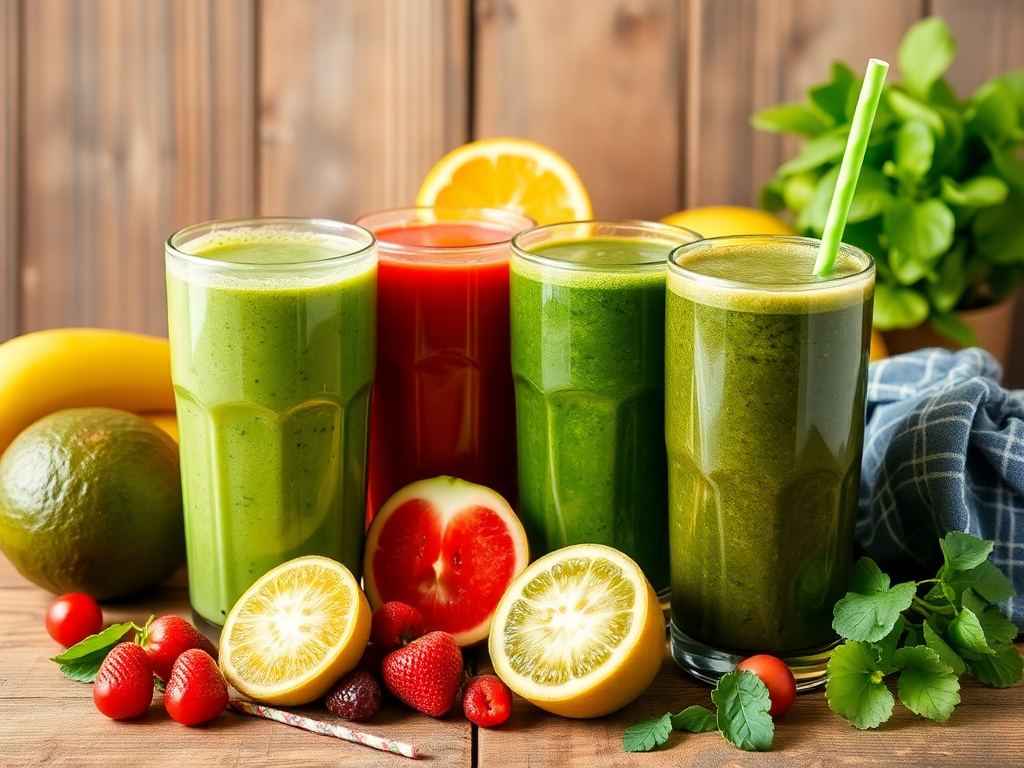Juicers are a great way to increase your daily fruit and vegetable intake while saving time and effort. There are two main types of juicers to distinguish: centrifugal juicers and slow juicers .
Both have their own strengths and weaknesses. However, there are now also modern slow juicers with a large XXL opening , which offer many of the advantages of classic slow juicers but are significantly more convenient to use.
Which option is best for you depends on your personal needs and preferences.
CENTRIFUGAL JUICER
Centrifugal juicers are the most commonly used juicers on the market. They work by chopping fruits and vegetables into small pieces and rotating them at high speed in a metal sieve to expel the juice.
This process is quick and efficient. Centrifugal juicers are particularly useful for producing large quantities of juice in a short amount of time. They are particularly well-suited for harder fruits and vegetables such as apples, carrots, or beets.
One disadvantage of these machines is the noise level during juicing. Furthermore, the rapid processing speed affects the quality of the juice—the juice begins to separate quickly and contains more foam. Nutrients and enzymes are more severely destroyed by the high speed. Centrifugal juicers, however, are usually cheaper and easier to clean.
Slow Juicer
Slow juicers operate significantly slower than centrifugal juicers. They press fruits and vegetables gently and slowly, preserving most of the nutrients and enzymes.
The result is a high-quality, clear juice with an intense color, minimal foam, and a higher nutrient content. Slow juicers also generally produce a better juice yield.
They are particularly suitable for soft fruits, leafy vegetables, herbs, and even grasses. The downside is that processing takes longer and cleaning is somewhat more complicated. Furthermore, traditional slow juicers are generally more expensive than centrifugal models.
SLOW JUICER WITH LARGE XXL CAPACITY – THE MODERN all-in-one solution
In recent years, a new class of appliance has emerged: slow juicers with a large XXL feed . They combine the advantages of both worlds.
Thanks to the extra-wide opening, whole apples, oranges, or large pieces of vegetables can be added directly—saving chopping and time. At the same time, these models utilize gentle slow juicing technology, which preserves valuable nutrients and enzymes and delivers high-quality, clear juice.
For those who want more convenience and speed when juicing without sacrificing juice quality, these modern slow juicers are the perfect solution. They are quieter than centrifugal juicers, deliver a higher juice yield, and are often easier to clean than traditional slow juicers.
CLEANING
An important factor when choosing the right juicer is cleaning.
Centrifugal juicers are generally quick and easy to clean. Their few parts, such as the strainer and juice container, can often be easily rinsed under running water or placed in the dishwasher.
Slow juicers, on the other hand, usually consist of several individual parts, such as the auger, sieve, and juice container. These require thorough cleaning, which takes a bit more time and effort. The fine sieve, in particular, requires a brush to remove residue.
Slow juicers with a large XXL opening often offer a more modern, user-friendly solution. Many of these models feature a simplified design and dishwasher-safe parts. The large opening also eliminates much of the pre-cutting work—less cutting waste means less cleaning. Some models even have a pre-cleaning function , which runs water through the device to loosen any residue.
With the new slow juicers with XXL opening you will find a good balance between juice quality and ease of cleaning .
JUICE QUALITY
When it comes to juice quality, there's no doubt about it: Slow juicers deliver higher nutrient content and cleaner, fuller-flavored juice. This is due to the gentle pressing at low speed. This preserves heat-sensitive nutrients and enzymes, some of which are lost due to frictional heat in centrifugal juicers.
Another advantage of slow juicers: They achieve a higher juice yield. The juice is also clearer and contains less foam, cloudiness, or dirt particles. They're also particularly suitable for grasses, leafy greens, and even nuts—giving you significantly more flexibility in your juice kitchen.
Centrifugal juicers, on the other hand, score points for their speed. Those who want to produce larger quantities of juice quickly and can forgo the highest nutrient content will be more satisfied with these machines. However, the juice usually separates more quickly with these machines, and foam and fine residue are normal.
Slow juicers with a large XXL feed chute offer an interesting compromise. They deliver the high-quality juice of a classic slow juicer, but are significantly faster to prepare thanks to the large feed chute. Less cutting means less effort and faster processing, without compromising on nutrient preservation and juice purity.
SO WHICH JUICER IS RIGHT FOR YOU?
Ultimately, it all depends on you and your priorities. If you like things quick and easy and want to produce large quantities of juice in a short time—for example, for the whole family or for the office—and are on a manageable budget, then a centrifugal juicer is a good choice.
However, if you value the highest nutrient content, maximum juice yield, and clear, finely filtered juice , you're better off with a slow juicer . While it takes more time and requires a little more patience to clean, it rewards you with the best juice quality.
And if you want both— healthy, nutrient-rich juice , but without hours of chopping and prep—then a slow juicer with a large XXL feed chute is the perfect solution for you. The large feed chute saves you time, while the gentle pressing method preserves the valuable vitamins and enzymes. This way, you get the best of both worlds: high quality and time-saving handling.
Conclusion: Consider what is more important to you: speed, quality, or both — and choose your juicer accordingly.
Find your perfect juicer with our quiz now!
Recommendation
Visit our Nutrilovers juicers & slow juicers and learn about the benefits of each model. If you still have questions, simply contact us via our support center , and we'll be happy to advise you personally.
THESE ARTICLES MAY BE OF INTEREST TO YOU
▷ Buy a slow juicer: 10 points you should definitely pay attention to
▷ Vertical vs. Horizontal Slow Juicer - What's the Difference?
More related articles:

